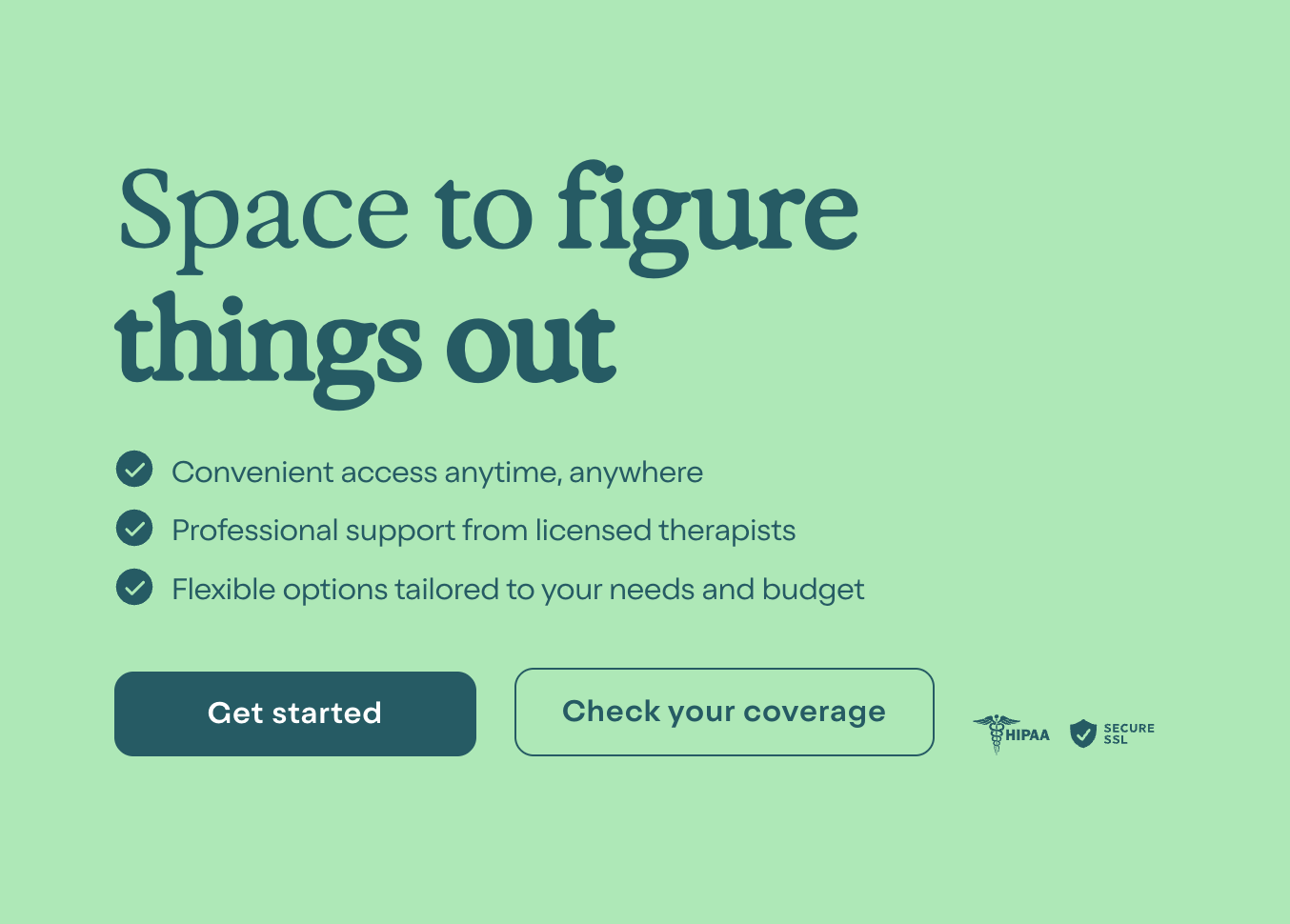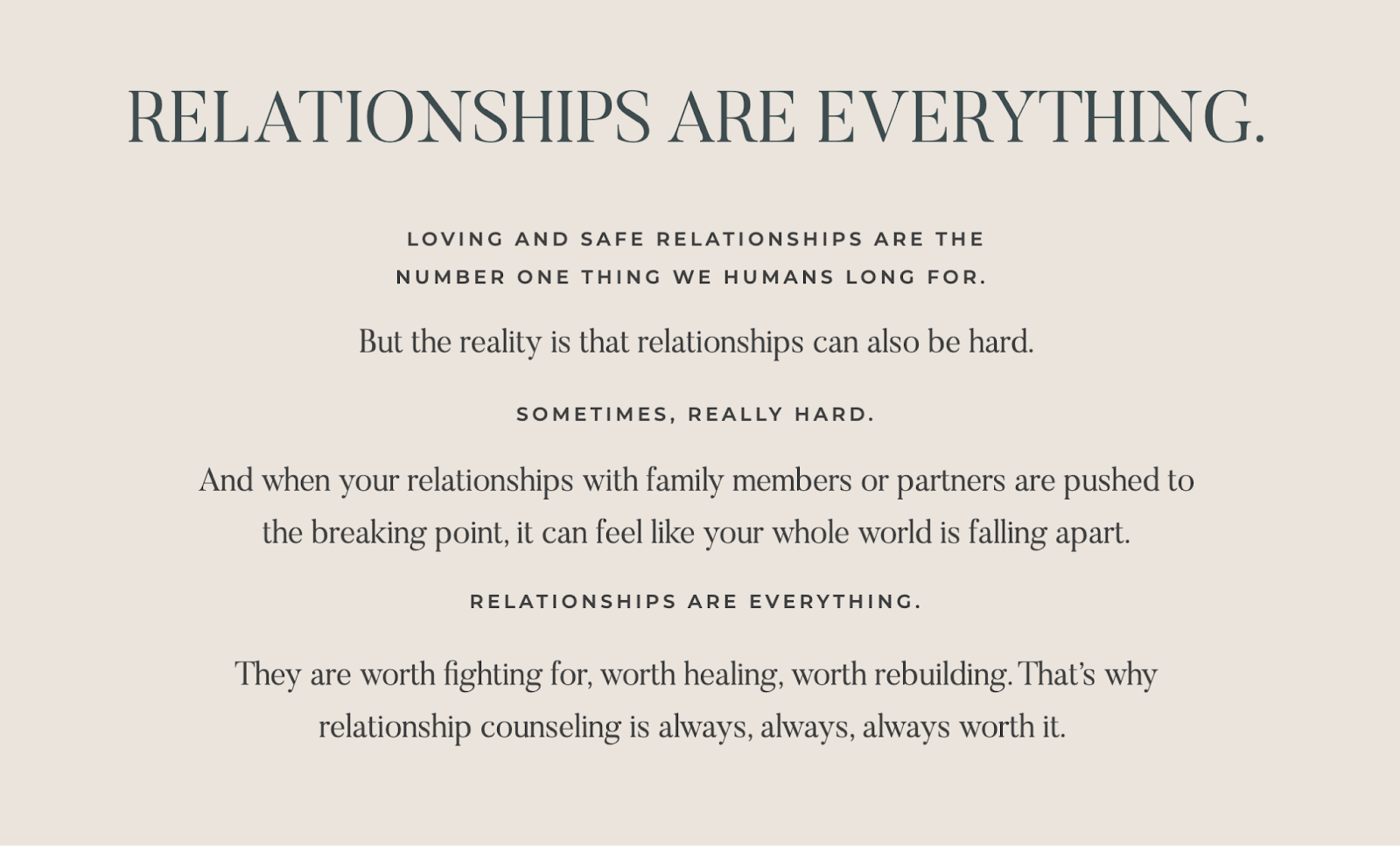invited you to try Thrizer! Start your free trial and enjoy waived credit card fees for your first in charges.

.jpg)
You know what you want your website to do: help people feel “seen” enough to reach out for services.
But when many therapists sit down to write their copy, what comes out is… vague fluff, like “helping you navigate life’s challenges” or “supporting you through it all.”
If that’s you, you’re not alone — and it’s not because you’re “bad at writing.” Here’s what’s going on:
Your practice serves several different types of clients. Couples. Families. Individuals. Or maybe it’s: anxiety, trauma, and grief.
That means your copy has to speak to people with very different motivations for seeking therapy.
You can flex for each client. But your copy can’t. No one message could encapsulate everyone you work with and still be specific, powerful, and do your work justice.
So where do you go from here?
That’s what we’re covering in this article: how to write focused, client-grabbing copy for your home page without a single-audience niche.
As you probably remember from grad school, excellent writing doesn’t start with the words themselves. It starts with clarity: your ideas, your positioning, your focus.
In marketing land, we call that your strategy.
So before you crack open the blank Google Doc, let’s strategize.
Here are the three strategies I recommend for writing compelling copy for your website, even if you don’t have a single-audience niche:
A: Focus your website (but not necessarily your practice) - Narrow your home page to speak to one priority client type, while still keeping room behind the scenes for the range of clients you see.
B: Focus on differentiators beyond client type - Highlight what makes your practice stand out (whether it’s your business model, values, or personality) so your website can be specific even without narrowing to one audience.
C: Find a creative throughline - Identify a specific thread that unites all your clients’ challenges and build your messaging around that, so your site feels cohesive without excluding anyone.
Ready? Let’s dive deeper into each one.
Most people believe their website has to be a one-to-one reflection of their practice. Every type of therapy, every client type, every modality… they think it all has to live front-and-center on the home page.
Take my current client, A, for example. She’s a well-regarded therapist in her city, with a solo private practice that books clients at $300+ an hour. She came to me wanting a website that reflected her wide client base of individuals, couples, and families.
But pretty early on, it became clear that this “include everyone” approach wasn’t going to work for her home page. Here’s an early draft of her hero section (i.e. the first things client see on the page) before we pivoted:

Honestly? I loved the way this headline sounded. The problem? It could apply to anyone, which means it deeply connects with no one.
A real person in crisis mode about their marriage, or panicking over losing contact with their adult child, or buried under the weight of grief… would read that and feel nothing. It’s too broad to cut through the noise and make them think, “This is exactly who I need.”
No amount of wordsmithing could fix that. It was a focus problem.
So we scrapped it.
Instead, my client got clear on her ideal clients for her website, even if she’d still see others behind the scenes. After some thought, here’s what emerged as her priority: private-pay couples. It was profitable, she loved the work, and her favorite modality was a perfect fit.
She still accepts family and individual clients. Those services even have their own pages on her website. But now her homepage speaks directly to her couple audience. Here’s the new hero:

This taps into a specific, urgent pain point: the moment someone fears they could lose one of their most important relationships.
If you relate to A’s situation, this could be your best strategy, too:
Maybe you have a group practice with clinicians who each have different specialties, and you want the home page to work for all of them. Or you’re in solo practice… but you feel strong resistance to picking a focus, even just for your website.
If Strategy A isn’t for you, this one might be. Strategy B is to look for differentiators beyond your target audience.
Are you doing things differently from how a typical practice does?
Maybe you’re all about accessibility, and you’ve managed to be able to accept most insurance plans or offer affordable sliding-scale pricing to everyone.
Or maybe you’ve gone all in on the intensive model because you believe it’s a better way to get clients results.
For a real-life example of this strategy, I look to Talkspace. However you feel about this company… They do have strong website messaging.
While they work with everyone and anyone (kinda their whole thing), their messaging on their home page still manages to stand out because they’re zeroing in on a clear differentiator: convenience and flexibility.
The subtle implication is that “other therapy” isn’t convenient or flexible (which… is often true). Not everyone values convenience above everything. But some people do. So that becomes their messaging focus for their website. In this way, they avoid the “pretty words that mean nothing” trap.

Do you have a way of relating to clients that’s unique for your space?
It’s common for therapists to be attuned and professional (and there’s nothing wrong with that if that’s you!). But if your natural personality or voice (in a professional context) is somewhat different from the norm, this could be a differentiator to lean into.
While the “what” behind what your website says might not be groundbreaking, the “how” can be. Showcasing your personality can help people feel a connection that makes you an easier yes than another therapist.
For example, my client Melissa’s voice is more casual than the typical therapist, and because she works with kids and teens, a group that would likely extra-appreciate a more conversational spirit, it makes sense to lean into it in her copywriting.
Here’s a snapshot from her website, using her real-life words she uses with clients:

If Strategy A or B doesn’t feel right to you, there’s a final option. It’s a little trickier to pull off, but in the right hands, it can work beautifully — and it frees you from having to limit who you see.
The idea is simple: find the thread that runs through every type of client you work with. Something specific enough to anchor your messaging, yet broad enough to apply across audiences.
Here’s an example for a therapist I worked with, Genny (I collaborated with Sierra Creative on this!). Genny saw couples, families, and individuals — all with very different presenting problems. At first glance, there wasn’t a single “type” to focus on.
But when we looked deeper, we realized there was a unifying theme: her favorite client’s struggles always traced back to relationships.
By centering the home page around the belief that “relationships are the center of life” and aligning messaging around those struggling with relationships, we created a message that felt relevant to every client type, without watering it down.
Here’s a sample from her home page:

Caution: Your throughline has to be specific enough. If it could apply to almost any therapist (for example, “everyone’s struggling with something”), it’s not strong enough. You’ll know you’ve nailed it when a very different colleague couldn’t use the same throughline and still sound authentic.
The moment a potential client lands on your home page, they’re scanning for signs you “get” them.
If your words are too broad, they’ll keep looking elsewhere. But if your copy speaks directly to their situation — whether that’s through a clear client focus, a standout differentiator, or a meaningful throughline — you immediately set yourself apart from dozens of other tabs they have open.
Your website doesn’t have to showcase everything you do to be effective. It just has to showcase the right thing in the right way. That’s what moves people from “just browsing” to “I need to work with you.”
So, choose your focus. Build your messaging around it. And let your home page become the moment a potential client feels truly seen and takes the next step to work with you.
Looking for expert copywriting for your therapist website? I’d love to meet you. Get in touch with me, here.
___
This blog post is provided for informational purposes only and is not intended as legal, business, medical, or insurance advice. Laws relating to health insurance and coverage are complex, and their application can vary widely depending on individual circumstances and state laws. Similarly, decisions regarding mental health care should be made with the guidance of qualified health care providers. We strongly recommend consulting with a qualified attorney or legal advisor, insurance representative, and/or medical professional to discuss your specific situation and how the laws apply to you or your situation.